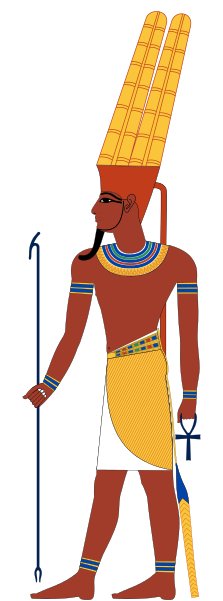The honu with 'penis' does not occur in other texts than C and G.
In C there is a reversal immediately beyond honu, with Janus figures back to back. But in G there is no such sign, and instead the vertical dimension is accentuated by the 'arrow head' in Ga3-11 pointing down. Earlier this 'head' was possibly high up and then in the middle:
South of the equator the end of July / beginning of August is not the end of high summer but the beginning of early spring. The southern July corresponds to our January and the southern August to our February. From an observation point on Easter Island the sun was about to return and rise higher and higher. The myth about Ure Honu finding the skull of the Sun King should be kept in mind: ... Another year passed, and a man by the name of Ure Honu went to work in his banana plantation. He went and came to the last part, to the 'head' (i.e., the upper part of the banana plantation), to the end of the banana plantation. The sun was standing just right for Ure Honu to clean out the weeds from the banana plantation. On the first day he hoed the weeds. That went on all day, and then evening came. Suddenly a rat came from the middle of the banana plantation. Ure Honu saw it and ran after it. But it disappeared and he could not catch it. On the second day of hoeing, the same thing happened with the rat. It ran away, and he could not catch it. On the third day, he reached the 'head' of the bananas and finished the work in the plantation. Again the rat ran away, and Ure Honu followed it. It ran and slipped into the hole of a stone. He poked after it, lifted up the stone, and saw that the skull was (in the hole) of the stone. (The rat was) a spirit of the skull (he kuhane o te puoko). Ure Honu was amazed and said, 'How beautiful you are! In the head of the new bananas is a skull, painted with yellow root and with a strip of barkcloth around it.' Ure Honu stayed for a while, (then) he went away and covered the roof of his house in Vai Matā. It was a new house. He took the very large skull, which he had found at the head of the banana plantation, and hung it up in the new house. He tied it up in the framework of the roof (hahanga) and left it hanging there ... The sun was standing just right for him to clean out the weeds, a mighty task: ... In Irish mythology, the Lughnasadh festival is said to have been begun by the god Lugh (modern spelling: Lú) as a funeral feast and athletic competition ... in commemoration of his mother (or foster-mother) Tailtiu. She was said to have died of exhaustion after clearing the plains of Ireland for agriculture ... It took him 3 days to find the head, painted yellow: ... Doors, windows, byres and the cattle themselves would be decorated with yellow May flowers, perhaps because they evoked fire. In parts of Ireland, people would make a May Bush; a thorn bush decorated with flowers, ribbons and bright shells. Holy wells were also visited, while Beltane dew was thought to bring beauty and maintain youthfulness ... The head of the banana plantation was the position in time, which I think refers to the time of Moon (the crescent of which is formed somewhat like a banana). Her time (winter) was ending here (when summer was ending north of the equator). Sun was crossing the equator on his way south. The Egyptian gods wore coloured belts:   Rainbows are generated when rain and sun are close. The colours (excepting white and black) need both sun and rain. When 'sky' is close to 'water' there will be colours. Using the human body as a map this place corresponds to the position of the Belt. Colours indicate the presence of both light and sweet water. And here life is present. The very large 'skull' of the Sun King will in this position generate much life (hakapekaga). Ure Honu could mean the penis of the turtle.
Furthermore, Ure Honu hanged his Sun Skull high under the roof of his new house, in its framework (hahaga), and we now can imagine there is an allusion to this fact in Metoro's choice of words:
The potent skull of the Sun King would work like a heap of fuel, it was ready to generate light and warmth.
|








